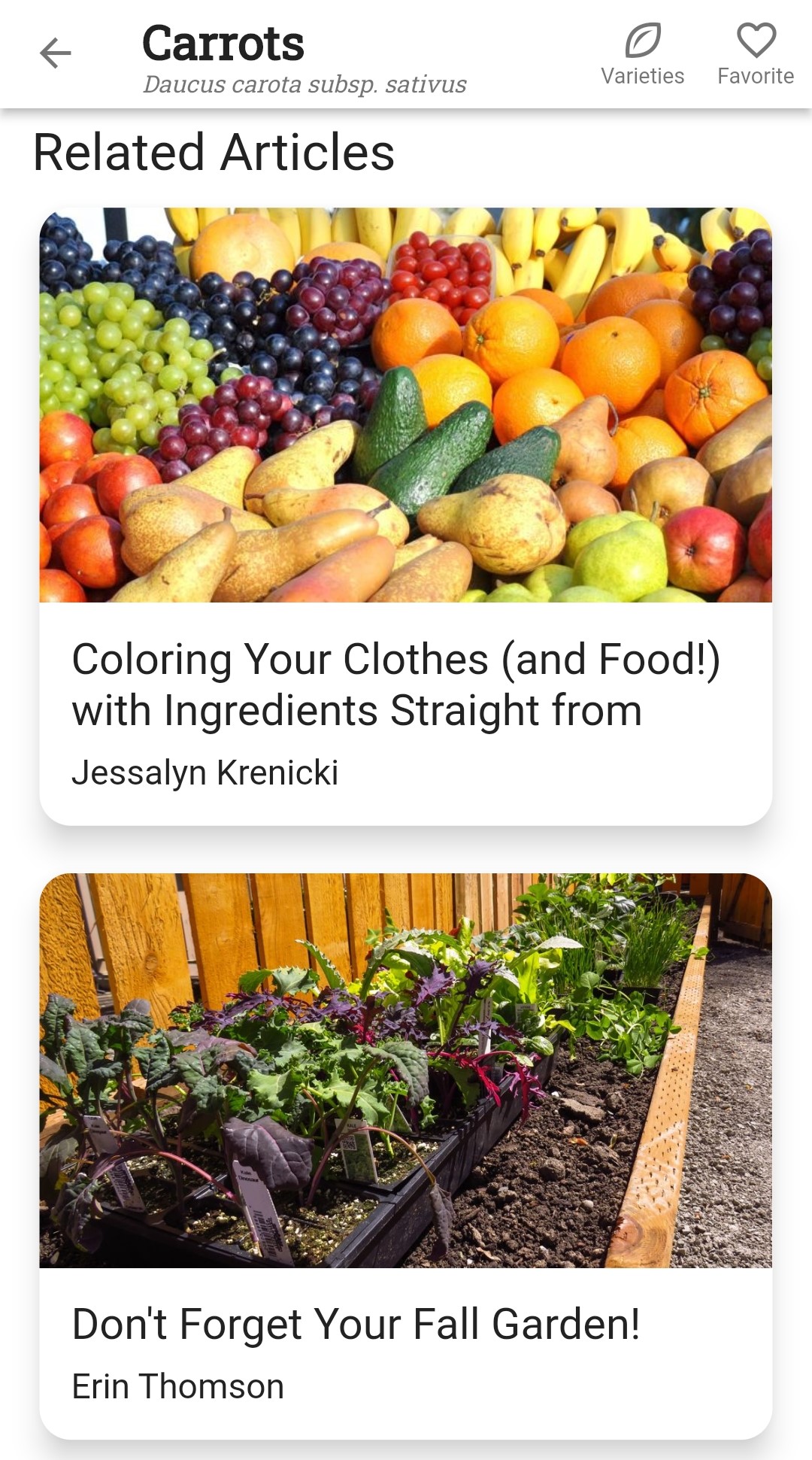Does Planter have plant care information?
On this page
Planter has plant care information for many plants, and new plants are being added all the time!
Category
Which group the plant belongs to in Planter.
Description
A brief overview of the plant and tips to grow it successfully.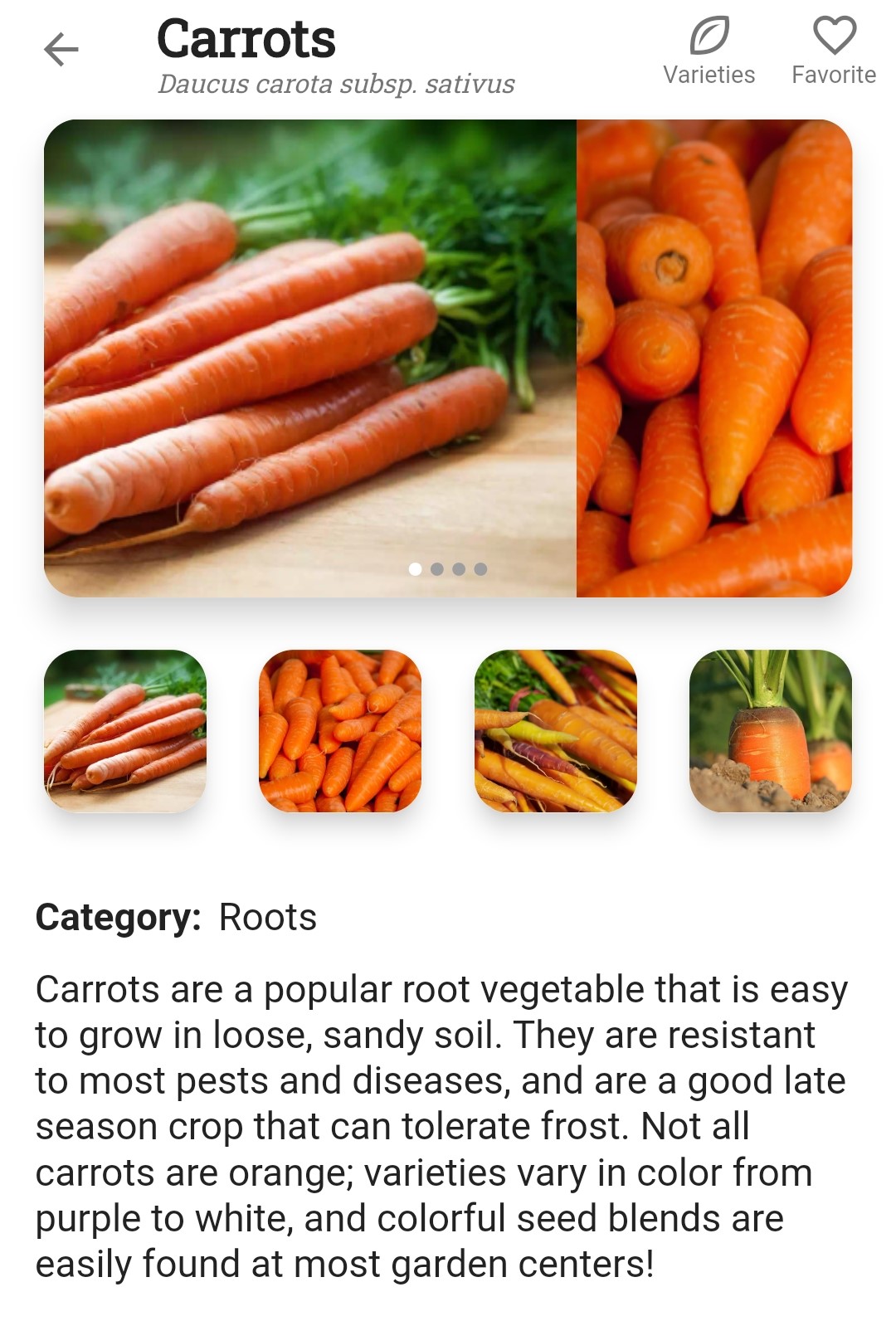
Quick Info
General planting and care information. Many of the quick info cards display additional details when selected: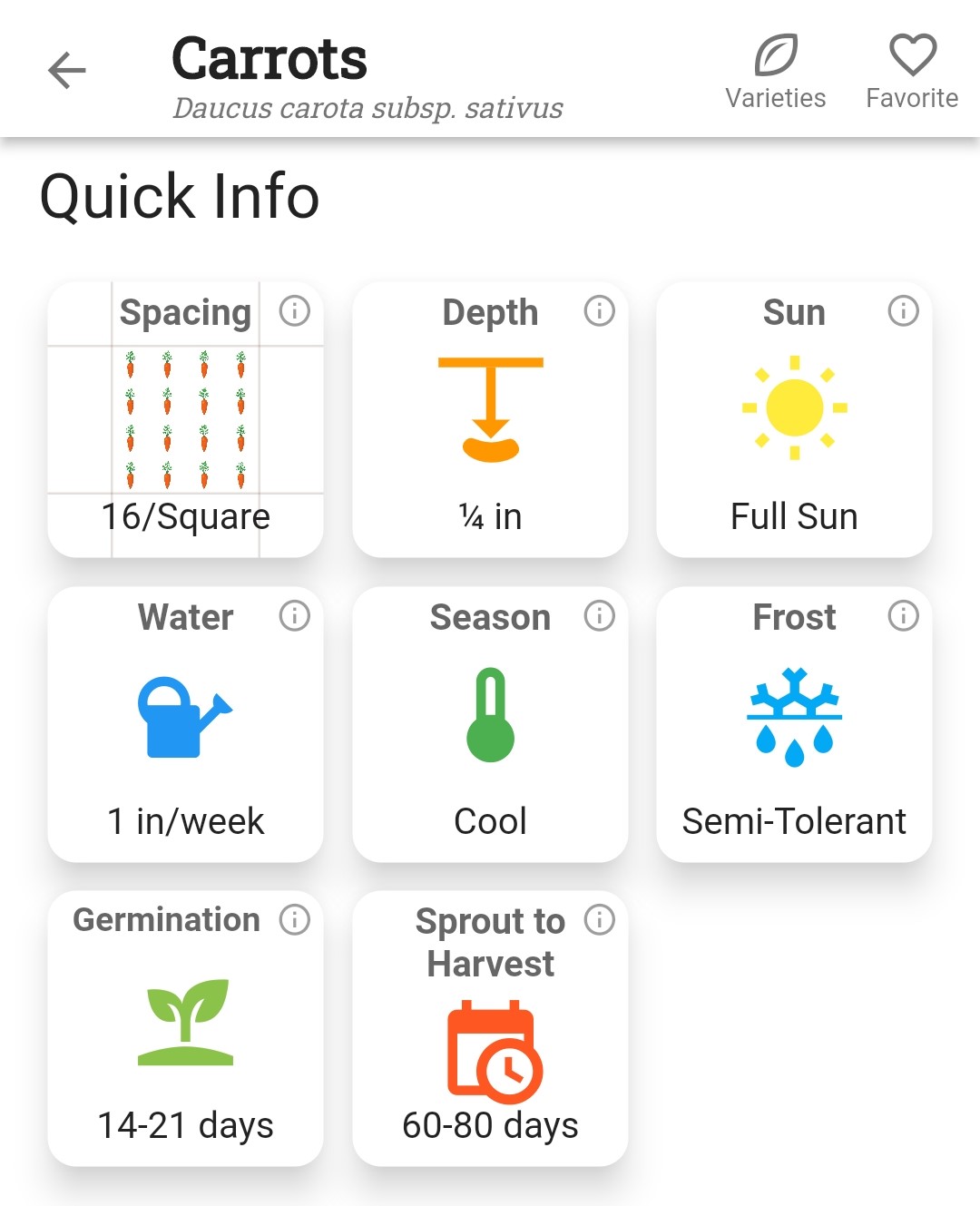
Spacing: how many plants fit within a square foot. The plant spacing per square foot can be customized by selecting this card.
Depth: how deep to plant the seeds (not transplants). For plants that aren’t typically grown from seed, the Depth card does not appear.
Sun: whether the plant prefers a Full Sun location (6 or more hours of sunlight per day), a Part Sun location (4-6 hours of sunlight per day), a Full-Part Sun location (4 or more hours of sunlight per day) or a location in the Shade (less than 4 hours of sunlight per day)
Water: how much water the plant needs in total per week. This can come from rainfall or supplemental watering. If the plant doesn’t typically need watering once it matures, the Water card won’t appear.
Season: whether the plant is a Warm season crop that grows best when daytime temperatures are above 70°F (21°C), a Cool season crop that stops producing when daytime temperatures reach 80°F (27°C), or a Perennial that comes back each year, so long as it’s hardy enough to withstand the local winter conditions
Frost: whether the plant is Tolerant of hard frosts with air temperatures are below 28°F (-2°C), Semi-Tolerant of light frosts with air temperatures are between 28°F and 32°F (-2°C and 0°C), or Not Tolerant of frost where any frost might kill the plant
Germination: how many days or weeks it takes the seeds to germinate (sprout) under proper germination conditions
Sprout to Harvest: once the plant has sprouted, how many days it takes for the plant to start producing or to be ready for harvesting
Growing Calendar
Shows when to Start Inside (start growing seeds indoors), when to Transplant (plant already-growing plants outdoors), and when to Start Outside (plant seeds directly outdoors), based on your frost date settings
If the plant is typically grown by planting seeds directly outdoors, only the Start Inside dates will show
If the plant is typically grown by starting seeds indoors then transplanting outside, only the Start Inside and Transplant dates will show.
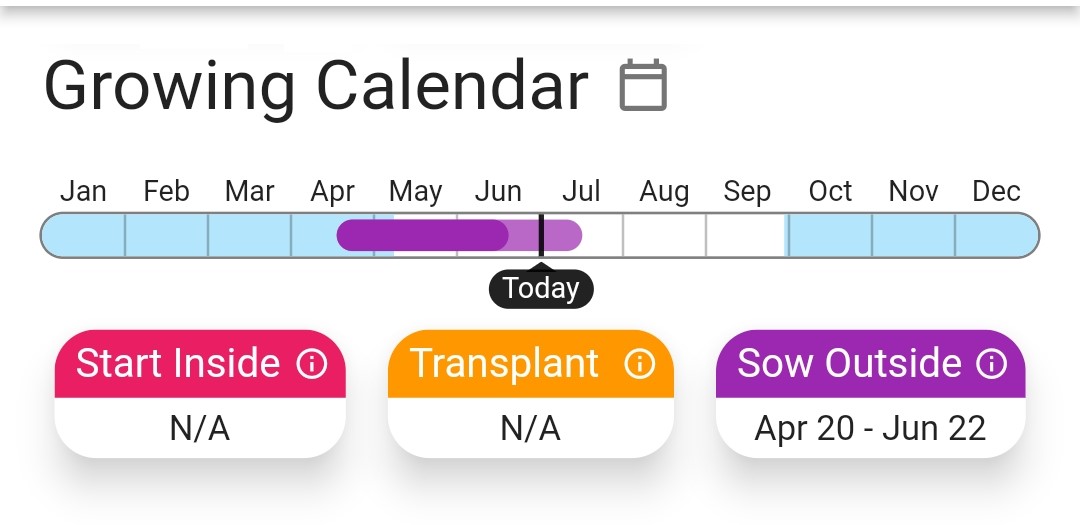
Varieties
Displays a list of recently used and favorite varieties. If there are no recently used or favorite varieties, other common varieties will appear.
- Select View All Varieties at the top to see the full list of varieties for the plant
- Select View All (#) Varieties at the bottom to see a full list of recently used, favorite, and common varieties
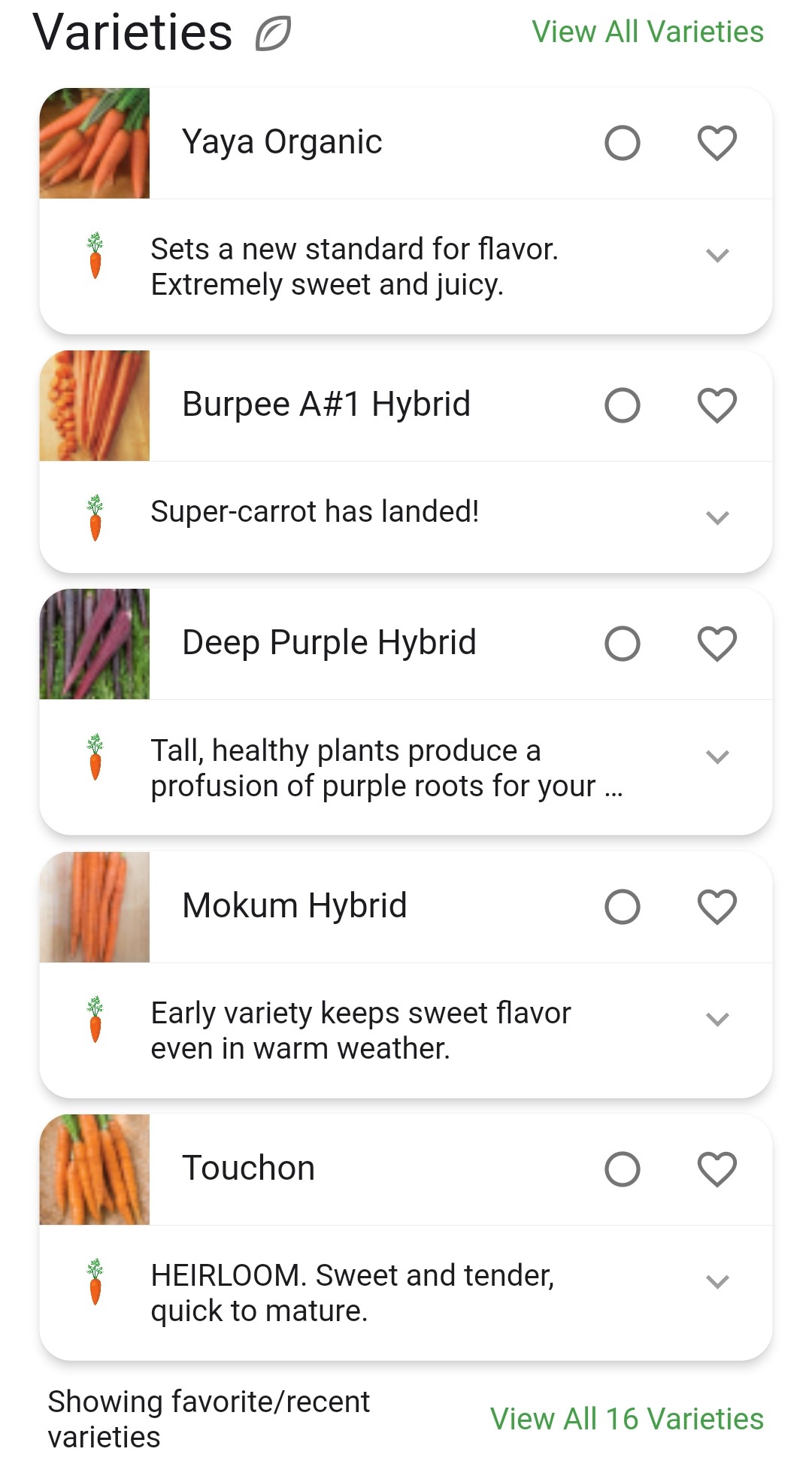
Companion Plants
Companion plants may offer benefits such as repelling pests and attracting beneficial insects when planted together
Toggle the grid icon to the list icon (and vice-versa) to see less or more detail and select the down arrow to expand the list of relationships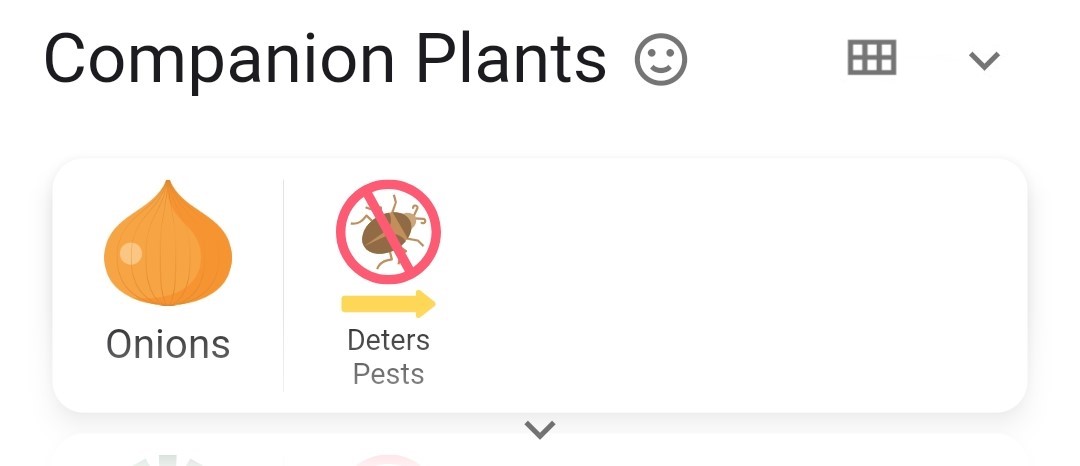
Select the relationship cards to see detailed information about potential benefits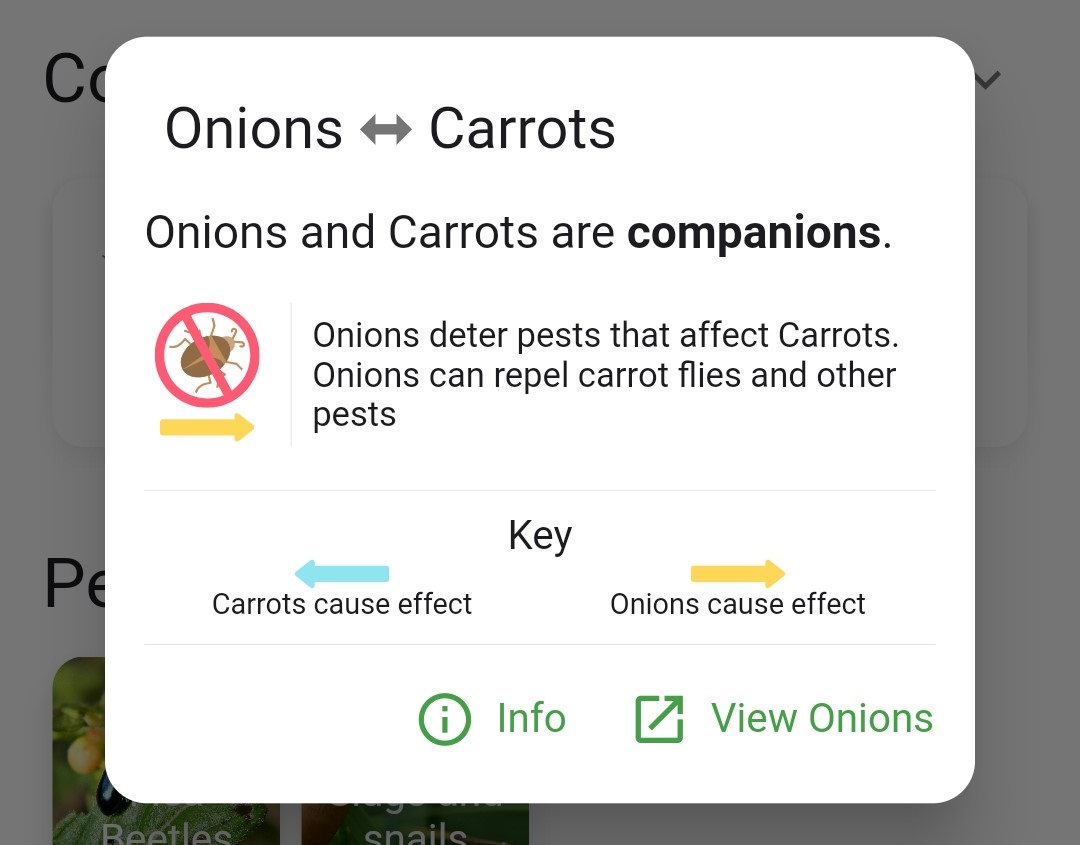
Combative Plants
Combative plants may compete intensely for the same resources or suffer from the same diseases and pests if planted together
Toggle the grid icon to the list icon (and vice-versa) to see less or more detail and select the down arrow to expand the list of relationships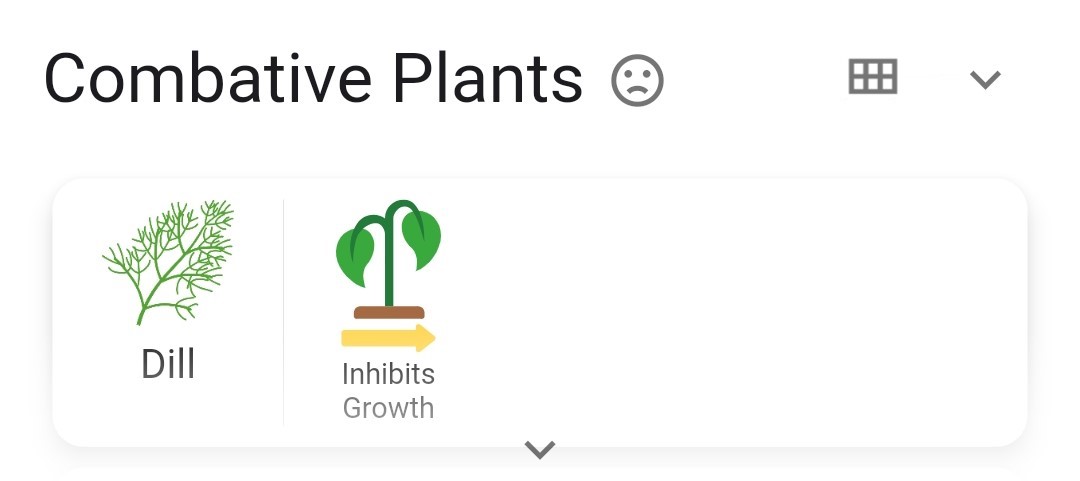
Select the relationship cards to see detailed information about potential drawbacks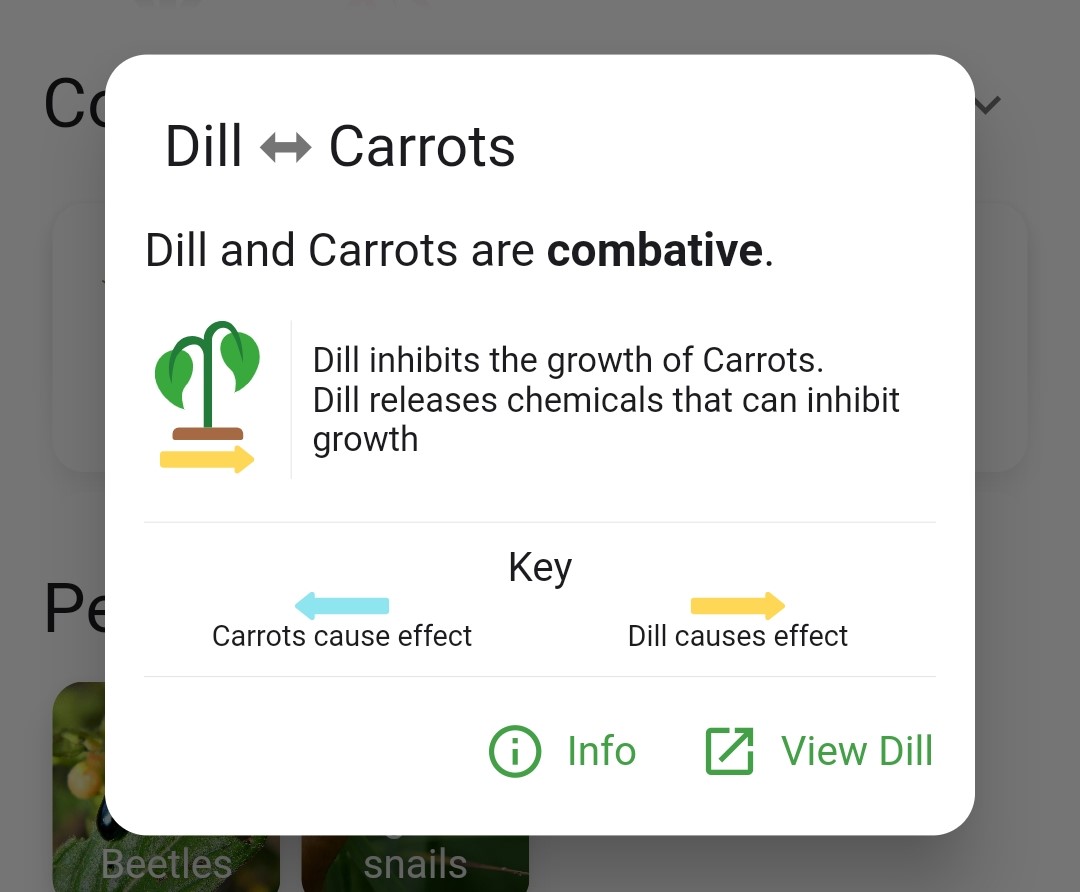
Pests
Pests that the plant tends to suffer from. Select the cards to learn more about each of the pests including: Plants affected, Identification, Damage, prevention, Physical controls, and Chemical controls.
Diseases
Diseases that the plant tends to suffer from. Select the cards to learn more about each of the diseases including: Plants affected, Identification, Damage, Prevention, Physical controls, and Chemical controls.
Beneficial Critters
Insects and animals that offer benefits to the plant. Select the cards to learn more about each of the beneficial critters including: Common species, Why they’re helpful, Identification, and How to attract them.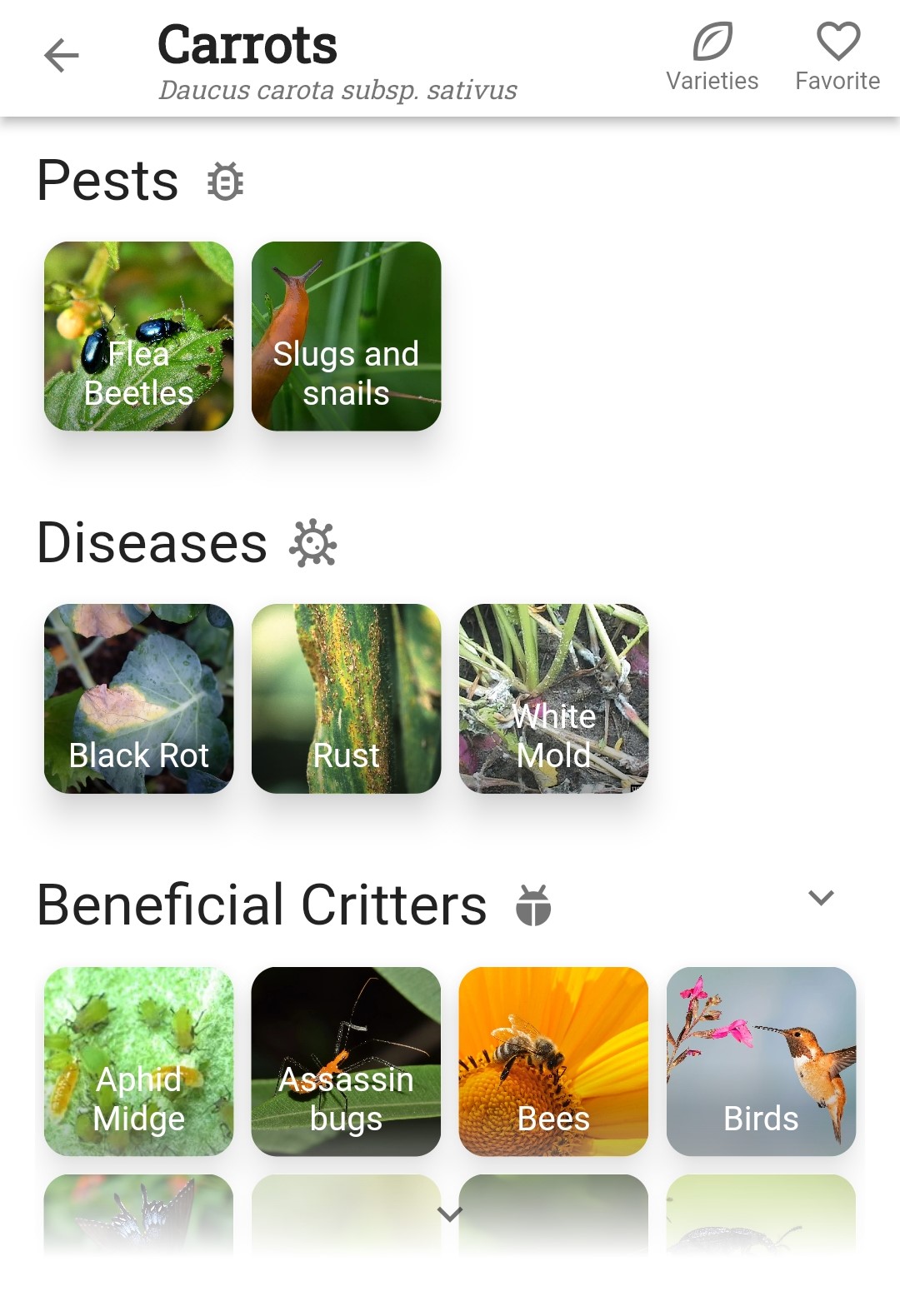
Growing from Seed
Notes whether gardeners typically grow the plant from seeds, and if so how to plant the seeds.
Planting Considerations
How to select a planting location, prepare the soil, and plant the plant.
Feeding
Whether the plant typically needs added fertilizer, and if so how and when to apply it.
Harvest
How to tell when the plant is ready to harvest and harvesting techniques.
Storage
Tips for storing and preserving the harvest.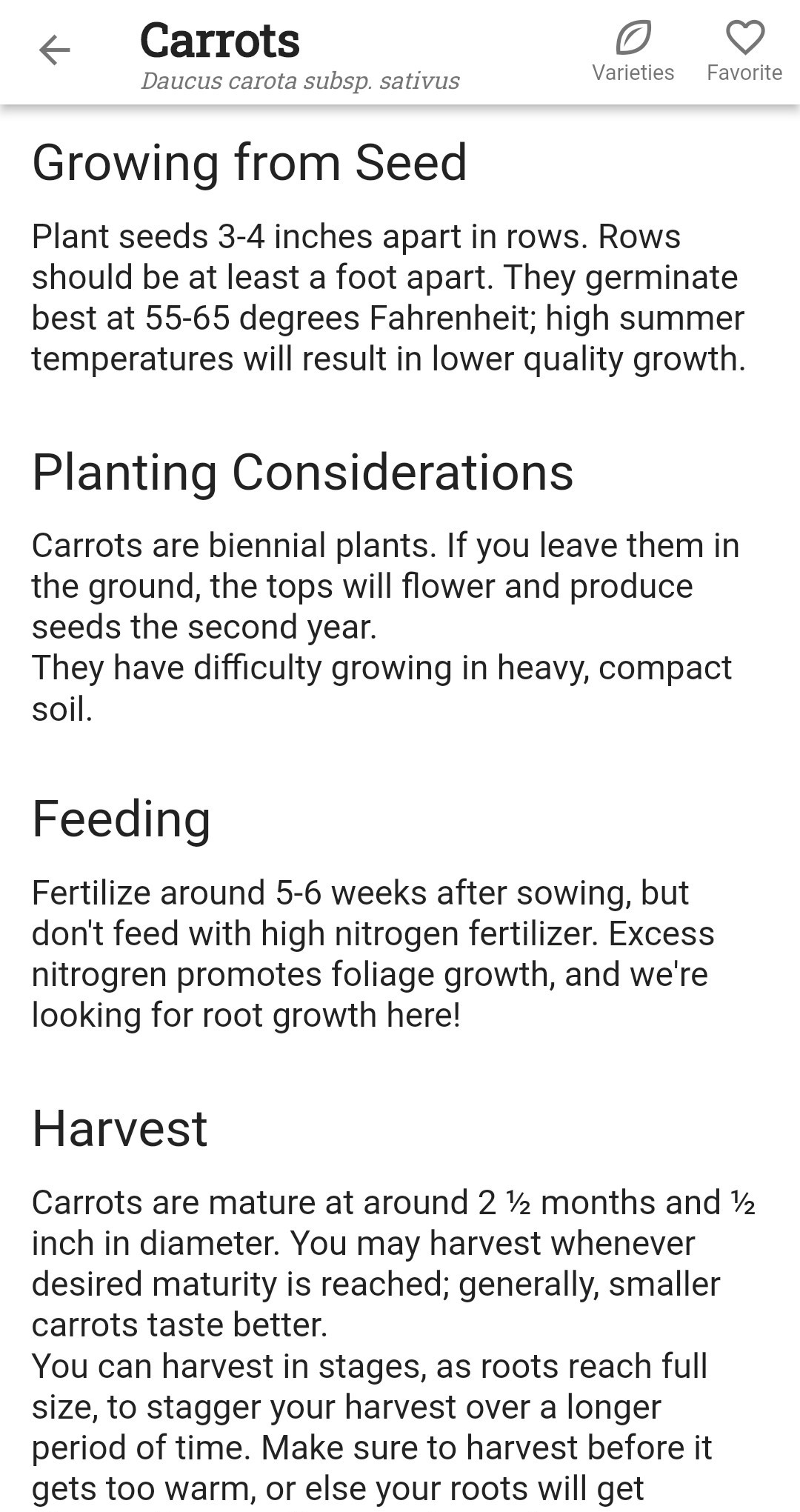
Related Articles
Links to Growing Guide articles related to the selected plant